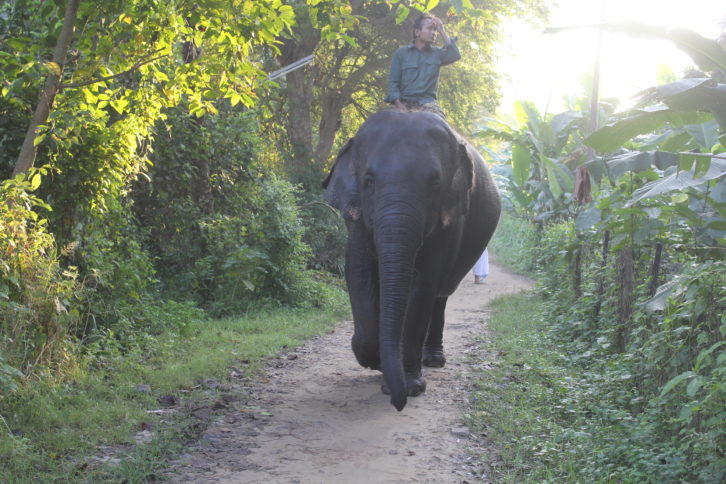
Picture this. There’s a rider sitting atop an elephant. They are on a path through a thick jungle which, in your mind’s eye, extends from left to right. With its gaze fixed, the elephant is walking to the left, his feet thumping loudly and methodically down the path. The rider, meanwhile, is straining tremendously, tugging at the reins in a futile effort to get him moving to the right. All around them the path is covered in felled trees and giant boulders, making movement in any direction an arduous task, even for a giant elephant.
Have you ever wondered why so many of your brilliant business ideas fail to take hold? How about why that member of your team, who is so full of potential, consistently struggles to implement feedback or adopt new SOPs? What about that important builder you work with who, despite countless conversations, continues to make things difficult on everyone with last-minute fire drills that could have been avoided? It turns out, your problems aren’t dissimilar from those of the rider, perched atop his elephant and struggling like crazy to get things moving in the right direction.
Also by Jason Griffing: The Important Difference Between Leadership and Management

I recently finished reading Switch. How to Change Things When Change is Hard by Chip and Dan Heath. The central premise of this excellent book is that all change, no matter how big or small, distills down to altering behavior on an individual level. And in order to drive these changes in behavior you must address three critical components:
- The Elephant: The Elephant represents people’s emotional side. On a positive note, the Elephant is big and strong, capable of generating vast amounts of kinetic energy. On the negative side, the Elephant is skittish and short-sighted. It is rather lazy and is generally content with things remaining just as they are.
- The Rider: The Rider represents people’s rational side. On the positive side, the Rider sees the big picture. He can grasp the need for short-term sacrifices in order to achieve long-term gains and is capable of providing the planning and direction necessary to arrive at the desired outcome. On the negative side, the Rider is a “navel gazer” and “wheel spinner” and is highly prone to analysis paralysis and indecision.
- The Path: The Path represents the external conditions or environment in which the Rider and the Elephant are trying to get moving in the same direction.
Using this three-part framework, it is easy to see why so many change initiatives fall well short of their goal. Driving meaningful and lasting change requires that the Elephant and the Rider are pointed in the same direction and that the path in front of them is clear. Yet all too often our strategy doesn’t account for all three of these vital components.
We make a strong emotional case for change, but fall woefully short in terms of providing clear direction. Or perhaps we rely exclusively on charts, graphs, and detailed analysis to highlight the need for change then wonder why the project stalls out after a week or two. Maybe we provide both a strong emotional and rational case for change, but forget that our systems and processes are so inefficient that people can barely keep up with the status quo, let alone drive meaningful and lasting change.
Also by Jason Griffing: How to Get More Done with Less Stress Using GTD
We have all experienced frustration in the face of a failed change initiative. And when we do, it is tempting to assign blame externally. But that exercise often fails to highlight the real problem. Instead, consider what the Heath brothers call the “three big surprises about change.” As you read these, take a moment to imagine the last time one of your big ideas failed to take hold:
- What looks like laziness is often exhaustion: This is an Elephant problem. Did you provide the emotional motivation needed to get your team excited about the project? What about the ongoing emotional support required in order to maintain momentum after the shine of newness wore off?
- What looks like resistance is often a lack of clarity: This is a Rider problem. Did you provide a sufficient amount of direction? Was the project broken down into clear steps with well-defined deliverables? Did you set up communication channels and regular meetings designed to efficiently feed people the information they need as the project progressed?
- What looks like a people problem is often a situation problem: These are Path problems. Was your proposed solution overly complicated, causing as many or more problems as it fixed? Did you take care to remove all unnecessary friction points in the process? Do you have an environment that fosters and supports the hard work necessary to change individual behaviors?
The next time you set out to drive change in your business, picture the Rider sitting atop his Elephant. Ask yourself how you can best get the two of them moving in the same direction on a clear path. In the end, all successful change can be distilled down to these three simple ingredients. Provide ample motivation. Give clear direction. And create a supportive environment. Alternatively, you can prepare for a long, arduous journey through the jungle.
Want more stories like this delivered to your inbox every day? Then sign up for the free Residential Systems eNewsletter here.







